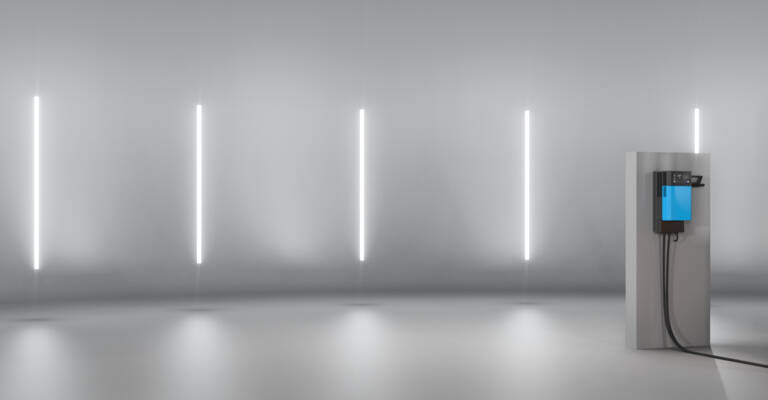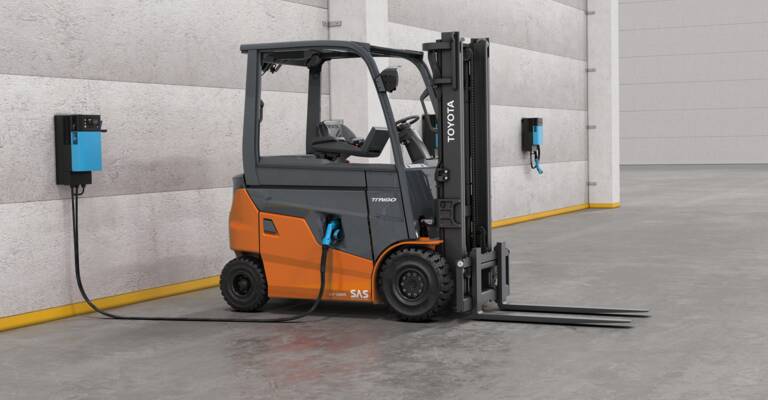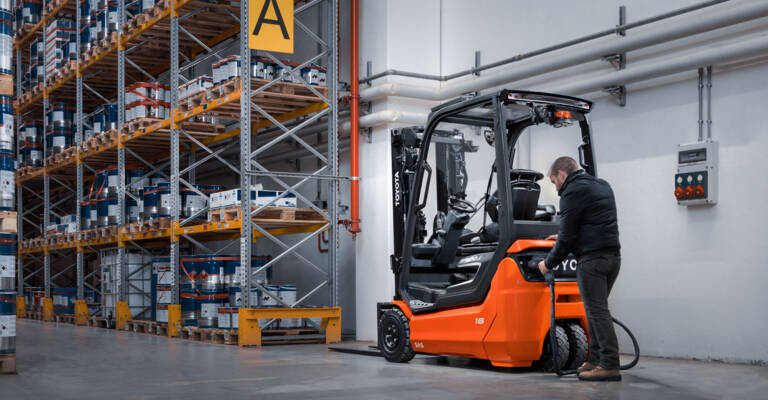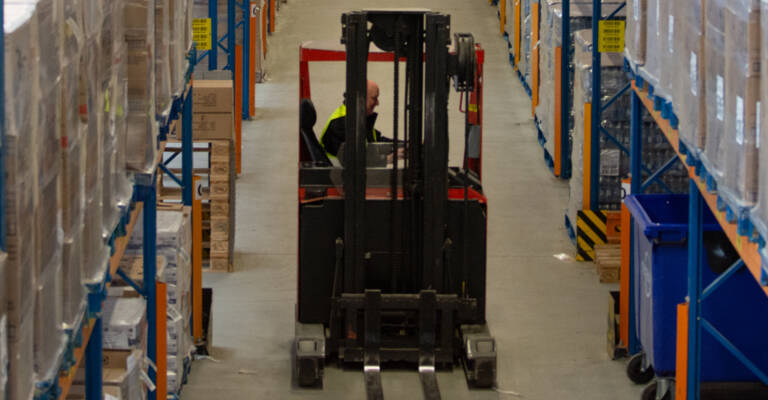Toyota’s li-ion technology streamlines ‘next-day delivery’ for Hermes Fulfilment logistics centre
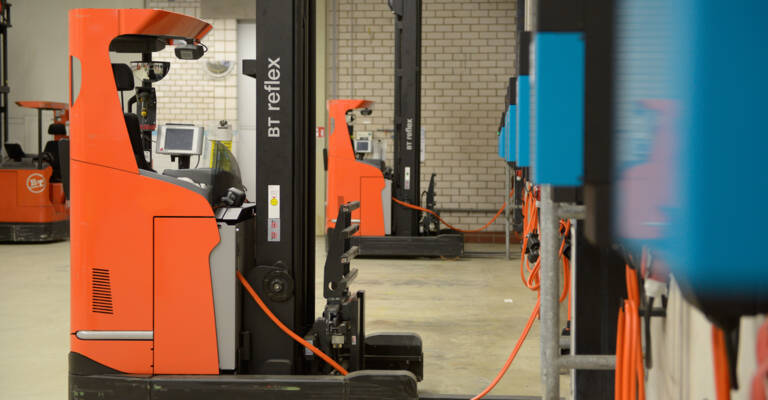
Facts & figures
- Company: Hermes Fulfilment
- Location: Ohrdruf, Germany
- Sector: Logistics
- Solutions: Li-ion technology, I_Site fleet management system
About Hermes Fulfilment GmbH
The Hermes Fulfilment GmbH centre in Ohrdruf, Thuringia, is one of six Hermes locations in Germany, with the company headquarters residing in Hamburg. The Ohrdruf site employs 370 permanent members of staff who ensure a streamlined intralogistics process chain. Different goods from 14 countries in Europe, including small electronics (e.g. smartphones), home accessories and larger items up to the weight of 31.5kg, are stored, picked and sent out for delivery. The site also offers a returns operation, which unloads and assesses returned goods and if necessary, repairs the items in a master workshop.
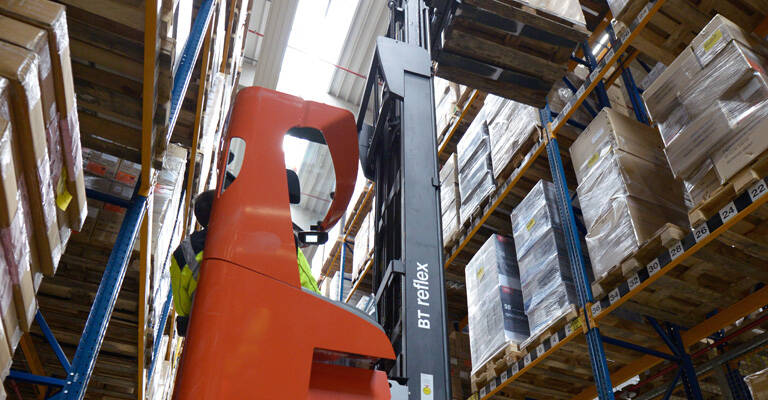
Meeting customer expectations
For operations to run smoothly and efficiently, the different sections within the logistics centre must work closely together. "All processes at the site must be coordinated with one another, otherwise we can have peak times like before Christmas for example, which are difficult to cover,” says Ronald Ganther, Head of Inbound, Hermes Fulfilment.
For the past two years, the location has offered even shorter delivery times. Ganther continues: “To deliver on our ‘next-day delivery’ promise, our employees pick in two shifts, which means our machines are working twice as hard and for longer periods.”
The trucks are in use for around seven hours at a time, so attempting to utilise the machinery for two consecutive shifts (with the lowest possible downtime) using lead-acid batteries was proving challenging. Exchangeable batteries were also unsuitable, due to them being time-consuming and requiring too much storage space.
“We were faced with the question: how can we use our industrial trucks as efficiently as possible and still meet increasing customer demands?”
A flexible device which offered a new kind of energy was needed.
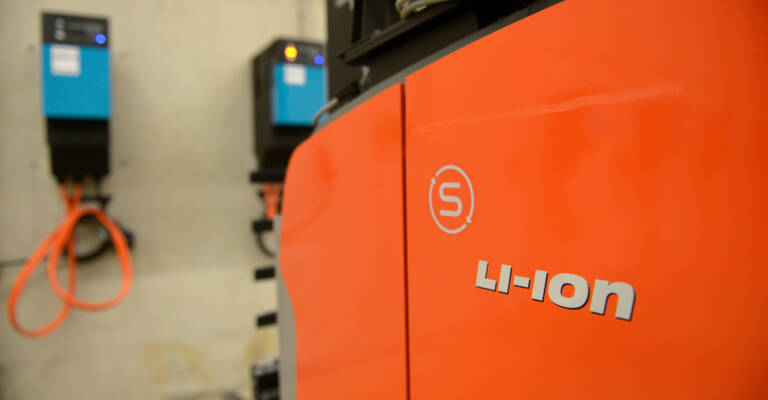
An efficient battery solution which saves time and money
Toyota Material Handling Europe provided the perfect solution: an innovative battery system with lithium-ion technology and intelligent charge management. This gave Hermes the opportunity to benefit from more coordinated charging cycles, extended device usage and contributed to a reduction in downtime, which proved essential to productivity during peak seasons.
All new devices at the site are now running on li-ion technology which has reduced electricity costs as the batteries can be charged quickly during quiet periods (e.g. lunch breaks). Battery replacement has become a thing of the past, plus there is no need for water refills and efficiency has greatly improved thanks to the compliance of charging cycles. “Toyota calculates charging cycles according to our needs; employees are provided with training on when to charge, so we can ensure that the operating times of the devices are appropriate to the shift patterns,” explains Ganther.
Faster charging requires higher charging currents; a ‘Dynamic Power Limitation’ (DPL)
ensures a group of chargers does not exceed the specified maximum current consumption which can otherwise cause current spikes when chargers are powered at the same time.
A DPL requires no extra work as the chargers communicate with each other by radio, eliminating the need for additional cabling. The battery status of all devices can be reviewed at any time through the I_Site fleet management from Toyota which allows compliance with charging cycles and helps to extend the battery life and save unnecessary costs during power peaks.
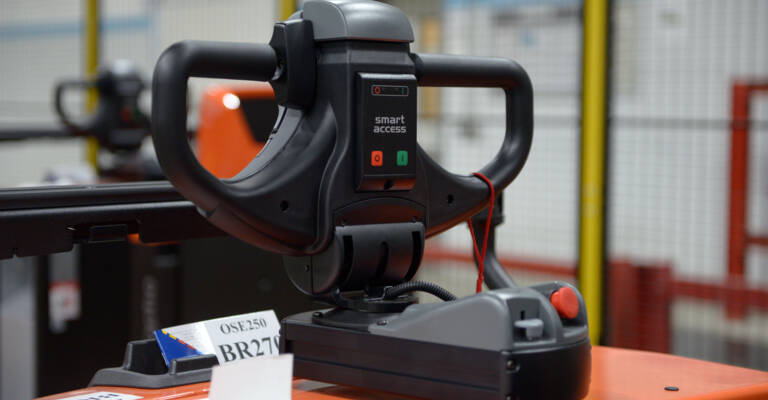
Utilising I_Site technology for increased safety on site
The advanced I_Site fleet management system is also used to deliver a higher standard of occupational safety in the workplace.
“For us, I_Site is a tool for optimisation: we see, for example, where collisions can occur, which allows us to take preventive measures. Also, thanks to Smart Access, only authorised employees have access to the vehicles,” explains Ganther.
The web-based application Smart Access ensures every operator receives an individual registration chip for a particular device. I_Site can also be used to train employees in careful handling of different machines for increased safety and responsible operations.

